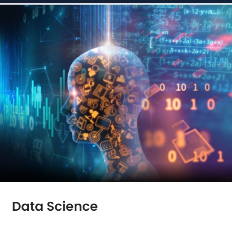
99XXXXXX33
Send MessageStreet Address: B153, sector 15
City: Noida
Province/State: Uttar Pradesh
Country: India
Business Details: Digicrome mission is to make professionals proficient and future-ready. Its programs always focus on the next frontier of growth in industry and currently straddle across Analytics, Data Science, Digital Marketing, Artificial Intelligence, Cloud Computing and more.
Business Type: Service Sector
Keywords: Online Advanced Digital Marketing Training Online Website Designing , planning & Optimization Training Online Search Engine Optimization Training Online Google AdWords - Search engine marketing Training Online Social Media marketing Training Online reputation management Training Online Display advertising Training Online Email marketing Training Online Video marketing (YouTube) Training Online Remarketing Training Online Content marketing Training Online Mobile marketing Training Online Affiliate marketing Training Online PMP CERTIFICATION TRAINING Online POS
Office Location: Uttar Pradesh

Accelerate your career in Data Science with the exclusive Data Science Analytics Program. Experience world-class Data Science training by an industry leader on the most in-demand Data Science Skills. Gain hands-on exposure to key technologies including Python, Machine Learning, Data Visualization, SQL and Artificial Intelligence. Become an expert Data Science professional today. The PGP-DS (Post Graduate Program in Data Science) gives you wide coverage to main ideas and techniques from Python, Exploratory Data Analysis to Machine Learning, Deep Learning and more. Practical labs and assignment work bring these ideas to life with our instructors and assistants to supervise you with the path. Equip your career with this commended PG Program in Data Science with Digicrome and the team. Data Science and Artificial intelligence have transformed the world completely. Organizations around the world are leveraging artificial intelligence to avoid repetitive tasks and improve customer experience. Robots are taking on the world by storm and are continuously building intelligence comparable to human brains. Artificial Intelligence and Machine Learning are the highest paying jobs in the world. As per a recent estimate, more than 90% of the companies will use artificial intelligence in one way or the other to build or enhance their products and services. These companies are looking for people who are skilled in data science and AI. Unfortunately, the industry is facing an acute shortage of highly skilled people to fill the void. Fortunately, Digicrome decided to be a part of the solution and has launched its PGP program in data science so that people can take advantage of our services and avail our data science graduate certificate online. Digicrome’s unique Post Graduate Program in Data Science will most certainly give new wings to your career. This online certification course is especially designed for young professionals and freshers who are keen on exploring and securing low-investment and high- reward careers in Data Science. It will be very beneficial to bachelors, masters, and post graduate students. Those coming from the industries of Information Technology, Consulting, Manufacturing, Pharma and Healthcare, and BFSI are especially welcome to join our data science certification and training and upskill themselves. Our singular online classroom training program provides immersive lectures which are delivered in an advanced technological package by our expert faculty online through video classes. You will be assigned a dedicated program manager to resolve all your questions, doubts, and queries that are external to the course curriculum and related more to the managerial aspects of the PGP in Data Science course. For all your study material related doubts, our dedicated instructors will conduct special one on one doubt clearing sessions with email, voice call, and video call support provided and you will be able to sail through our Data Science certification course smoothly. You will also be assigned many assignments and projects as part of the PGP in Data Science course and that will go a long way towards helping you test your skills and newly acquired knowledge in a practical and constructive way. The instructors will also provide pointed and accurate feedback on all the learners’ assignments and projects, helping with debugging and encouraging active participation. We at Digicrome provide dedicated placement assistance by providing exclusive learner hiring drives for those person who have enrolled in the PGP in Data Science course and have successfully completed the course and achieved scores above a certain percentage in all the quizzes, exams, capstone projects, and assignments. We also encourage learner networking with each other and with our mentors and industry professionals by providing them a common platform in which they can communicate with each other and enrich this online Data Science certification course even further . Our course curriculum for the PGP in Data Science course is designed with meticulous care to provide the learners with a straightforward course path of natural progression in which new topics and concepts are gradually introduced to them and in which they are exposed to interconnected Data Science facets such as Python, SQL, Tableau, Machine Learning techniques, Deep learning and neural networks, Exploratory Data Analysis, Data Visualization, Artificial Intelligence etc. Program Curriculum An overview of what you will learn from this program. Foundations Introduction to programming using Python Hello World Variables Basic Arithmetic & logical operators (int, float) Data Types - numbers, boolean & strings Concat, Subset, Position, length etc. If-else, loops Logic Flowcharts (Intuitive understanding of code flow) Pseudo Code Basic Programming syntax List, Tuples, Sets & Dictionaries ? Default functions Default methods Intro? to Conditional statements (if-else, elif), Nested Conditional in Python ? Intro? to Basic For, While Loops, Break in Python? Convert pseudo codes from Day 1 into programs using Loops and if-else. ? List Comprehension? Use cases vs Loops Write Programs including both loops and If-else Practice list comprehensions Lab Exercises Exploring commonly used built in functions (min, max, sort etc.) Programming user defined functions Working with functions with and without arguments Functions with return items Understanding lambda functions Overview of map, reduce and filter functions Data Analysis Statistical Methods for Decision Making Sampling Probability distribution Normal distribution Poisson's distribution Bayes’ theorem Central limit theorem Type 1 and Type 2 errors Hypothesis testing Types of hypothesis tests Confidence Intervals One Sample T-Test Anova and Chi-Square Machine Learning Techniques Supervised Learning - Regression Looking at regression through the perspective of machine learning Accuracy scores as a metric of model performance Measuring the importance of individual variables in a regression model Review - testing for individual significance vs joint significance Using the adjusted R^2 to compare model with different number of independent variables Approaches to feature selection Forward and backward selection Parameter tuning and Model evaluation Extending linear regression Data transformations and normalization Log transformation of dependent and independent variables Case study: - Dealing with categorical independent variables One hot encoding vs dummy variable regression Case study on linear regression Modelling probabilistic dependent variables The sigmoid function and odds ratio The concept of logit The failure of OLS in estimating parameters for a logistic regression Introduction to the concept of Maximum likelihood estimation Advantages of the maximum likelihood approach Modelling a logistic regression problem with a case study Making predictions and evaluating parameters Unsupervised Learning What is Unsupervised learning? The two major Unsupervised Learning problems - Dimensionality reduction and clustering. Clustering algorithms. The different approaches to clustering – Hierarchical and K means clustering. Hierarchical clustering - The concept of agglomerative and divisive clustering. Agglomerative Clustering – Working of the basic algorithms. Distance matrix - Interpreting dendograms. Choosing the threshold to determine the optimum number of clusters. Case Study on Agglomerative clustering The K-means algorithm. Measures of distance – Euclidean, Manhattan and Minowski distance. The concept of within cluster sums of squares. Using the elbow plot to select optimum number of cluster’s. Case study on k-means clustering. Comparison of k means and agglomerative approaches to clustering. Noise in the data and dimensional reduction. Capturing Variance - The concept of a principal components. Assumptions in using PCA. The working of the PCA algorithm. Eigen vectors and orthogonality of principal components. What is complexity curve? Advantages of using PCA. Build a model using Principal components and comparing with normal model. What is the difference? Putting it all together. The relationship between unsupervised and supervised learning. Case study on Dimensionality reduction followed by a supervised learning model. Case study on Clustering followed by classification model. Database Management System using My SQL Database Management System using My SQL Introduction to DBMS An Introduction to Relational Database Concepts and SQL Accessing Data Servers MYSQL/RDBMS Concepts Extraction, Transformation and Loading (“ETL”) Processes Retrieve data from Single Tables-(use of SELECT Statement) and the power of WHERE and ORDER by Clause. Retrieve and Transform data from multiple Tables using JOINS and Unions Introduction to Views Working with Aggregate functions, grouping and summarizing Records Writing Sub queries Exploring Data Analysis Exploring Data Analysis Reading the Data Cleaning the Data Data Visualization in Python Summary statistics (mean, median, mode, variance, standard deviation) Seaborn Matplotlib Population VS sample Univariate and Multivariate statistics Types of variables – Categorical and Continuous Coefficient of correlations, Skewness and kurtosis Supervised Learning - Classification Supervised Learning - Classification Classification Problems – Examples. Binary classification vs Multi class classification. Decision trees – Simple decision trees. Visualizing decision trees and nodes and splits. Working of the Decision tree algorithm. Importance and usage of Entropy and Gini index. Manually calculating entropy using Gini formula and working out how to split decision nodes Evaluating decision tree models. Accuracy metrics – precision, recall and confusion matrix Interpretation for accuracy metric. Building a a robust decision tree model. k-fold cross validation - Advantages against simple train test split. CART - Extending decision trees to regressing problems. Advantages of using CART. The Bayes theorem. Prior probability. The Gaussian NAÏVE’S BAYES Classifier. Assumptions of the Naive Bayes Classifier. Functioning of the Naïve’s Bayes algorithm. Evaluating the model - Precision, Recall, Accuracy metrics and k-fold cross validation ROC Curve and AUC for binary classification for Naive Bayes. Extending Bayesian Classification for multiclass classification Data Visualization Data Visualization Using Tableau Introduction to Visualization, Rules of Visualization Data Types, Sources, Connections, Loading, Reshaping Data Aggregation Working with Continuous and Discrete Data Using Filters Using Calculated Fields and parameters Creating Tables and Charts Building Dash Boards and story boards Sharing Your Work and Publishing for wider audience Introduction To Artificial Intelligence Time Series Forecasting What is Time Series? Regression vs Time Series Examples of Time Series data Trend, Seasonality, Noise and Stationarity Time Series Operations Detrending Successive Differences Moving Average and Smoothing Exponentially weighted forecasting model Lagging Correlation and Auto-correlation Holt Winters Methods Single Exponential smoothing Holt’s linear trend method Holt’s Winter seasonal method ARIMA and SARIMA Text Mining And Sentimental Analysis Text cleaning, regular expressions, Stemming, Lemmatization Word cloud, Principal Component Analysis, Bigrams & Trigrams Web scrapping, Text summarization, Lex Rank algorithm Latent Dirichlet Allocation (LDA) Technique Word2vec Architecture (Skip Grams vs CBOW) Text classification, Document vectors, Text classification using Doc2vec Ensemble Techniques Ensemble Techniques Bagging Boosting Bagging & Boosting Examples Data Visualization Using Google Data Studio Data Visualization Using Google Data Studio Introduction to Visualization, Rules of Visualization Data Types, Sources, Connections, Loading, Reshaping Data Aggregation Working with Continuous and Discrete Data Using Filters Using Calculated Fields and parameters Creating Tables and Charts Building Dash Boards and story boards Sharing Your Work and Publishing for wider audience Deep Learning And Neural Network Introduction to Deep Learning Neural Networks Basics Shallow Neural Networks Deep Neural Networks Forward Propagation and Backpropagation. How to Build and Train Deep Neural networks, and apply it to Comput